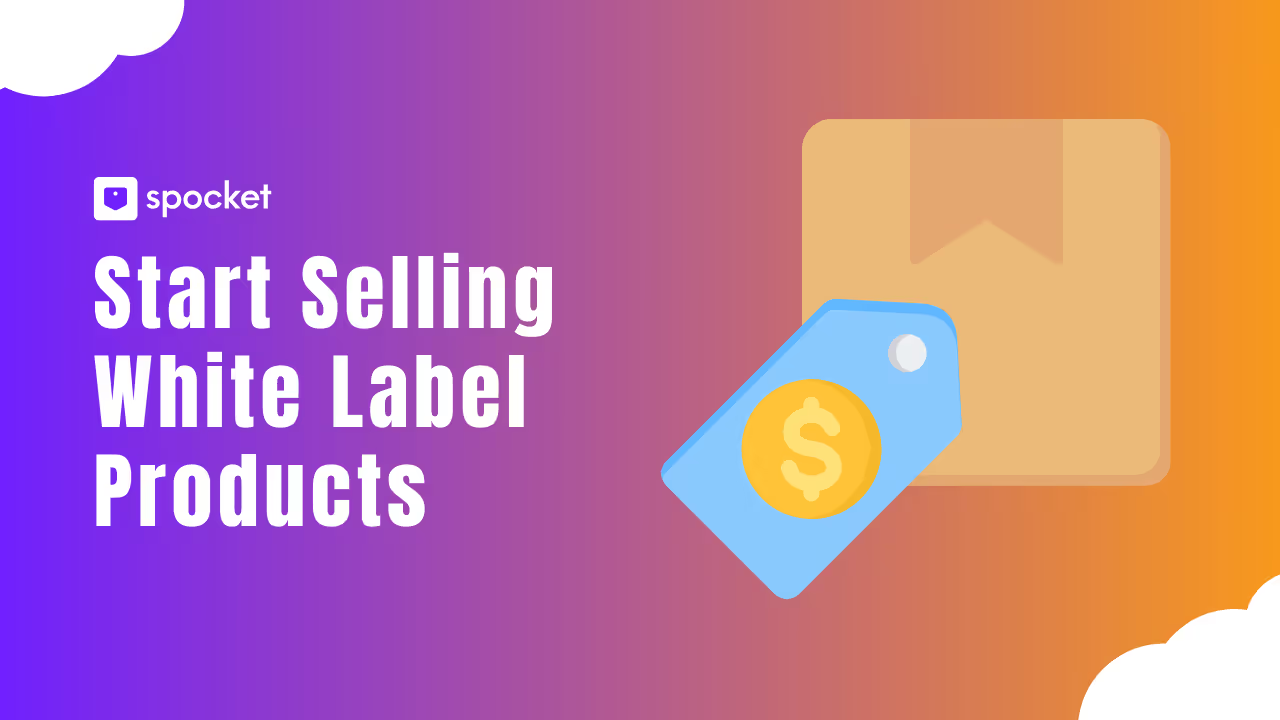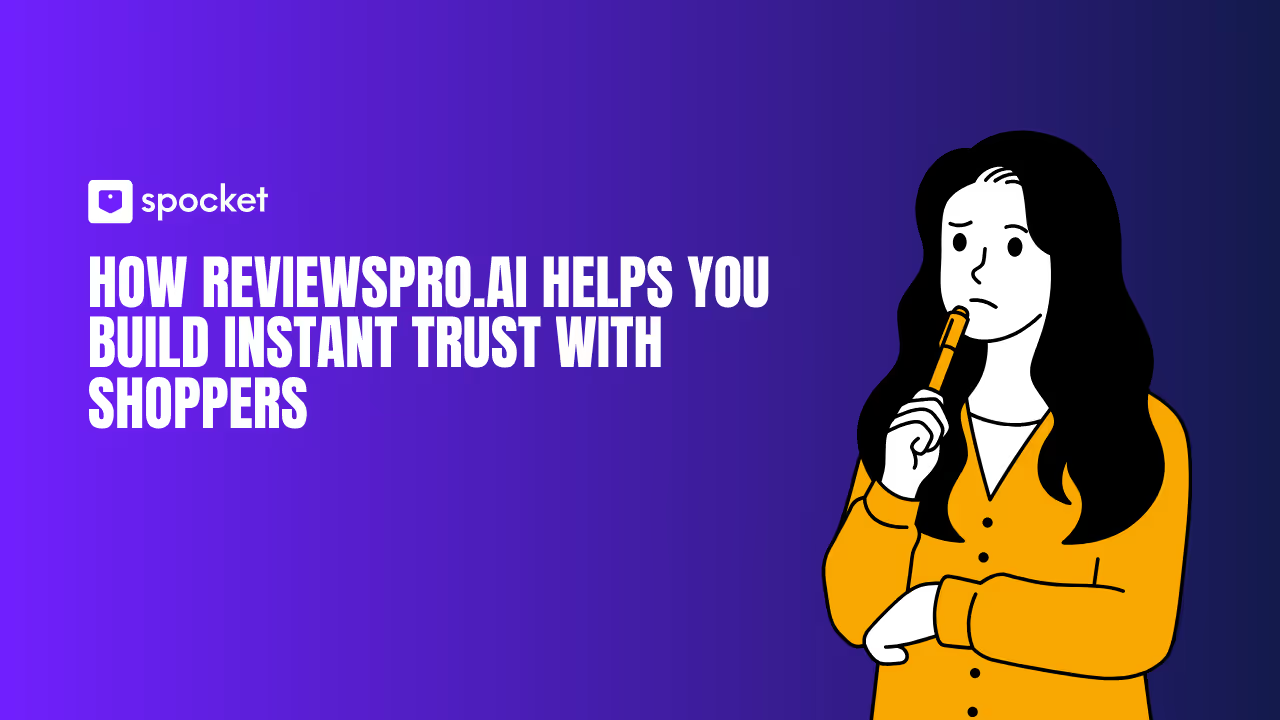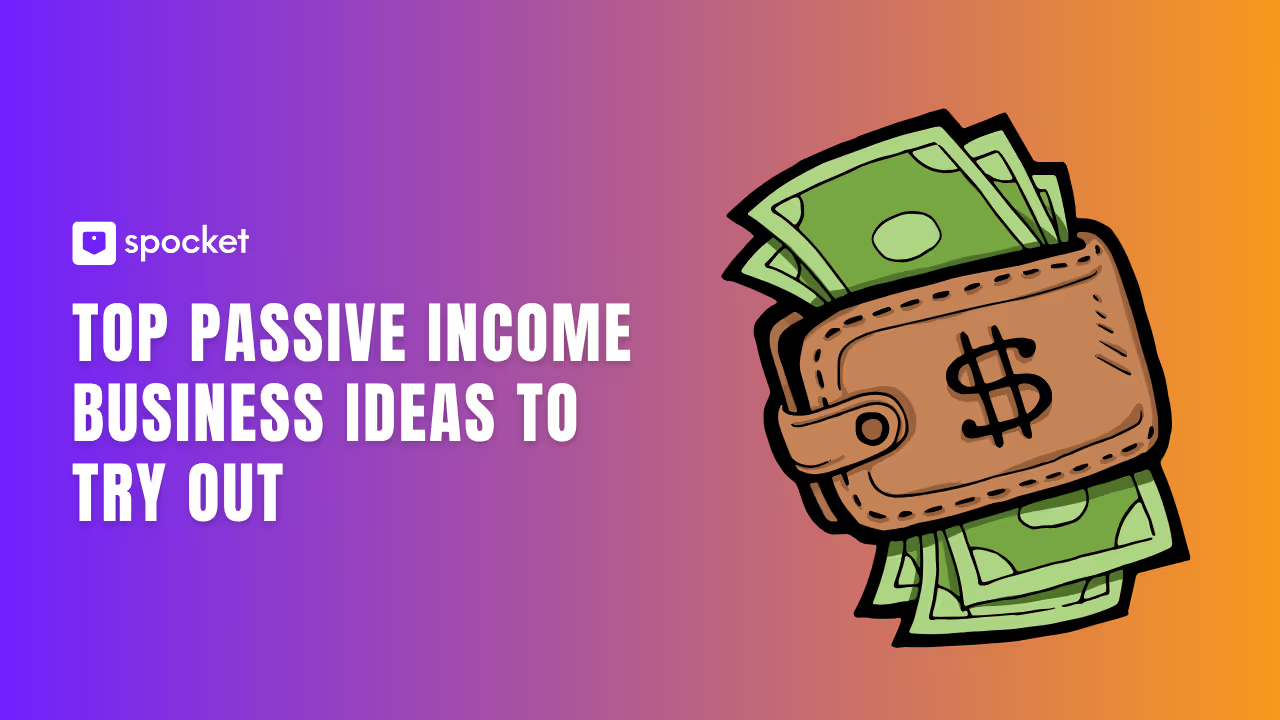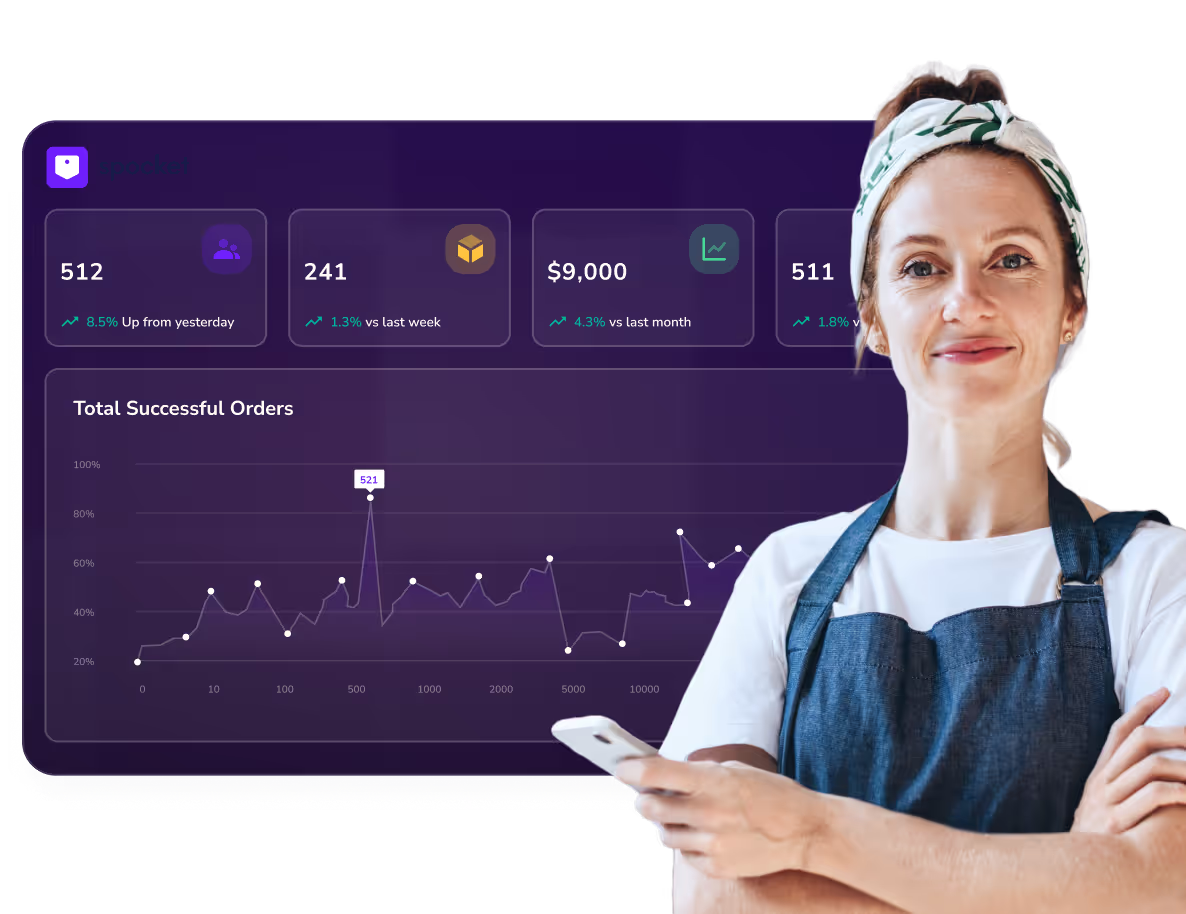Have you ever wanted to launch your own brand without dealing with factories, production lines, or huge upfront costs? Selling white label products makes that possible.
In 2025, white labeling is more than a buzzword. It is a practical, low-risk way to start a business by using pre-made products and customizing them with your own branding. Instead of spending months developing something from scratch, you can focus on what actually grows a business—building your brand and reaching the right audience.
Whether you're a solo entrepreneur, a student with a business idea, or an established company looking to expand, white labeling gives you the flexibility to enter the market fast and stay lean.
This guide breaks down the exact steps you need to take, from choosing the right niche to finding trusted suppliers and marketing your products effectively. If you're ready to start strong and grow smart, you're in the right place.
What Are White Label Products and How Do They Work?
Before you dive into selling, you need to understand what white label products really are. This section breaks it down simply, so you know exactly what you’re working with and why it’s such a powerful model for building your brand.
Let’s clear the confusion and get into how white labeling actually works—and why it’s smarter than reinventing the wheel.
White Label Meaning and Real-World Examples
White label products are ready-made items created by a third-party manufacturer. You buy these products and sell them under your own brand name, as if they were uniquely yours.
You don’t own the formula or design, but you can customize the packaging, logo, and overall branding. This gives you full control over how it looks and feels to the customer.
Think of it like this: a factory makes the same face cream for 10 different brands. Each one slaps on its own label, creates unique packaging, and sells it with its own story. Same product. Completely different brand experience.
Some popular white label categories include skincare, fitness gear, reusable drinkware, tech accessories, supplements, and eco-friendly goods. These are often trending products with high demand, making them perfect for starting fast without having to invent something new.
White Label vs Private Label: What’s the Difference?
These two terms often get mixed up, but they are not the same thing.
White label products are fully generic and sold to multiple businesses. You simply add your brand and start selling. Private label products, on the other hand, are usually created specifically for one business, with more custom formulas or features involved.
Private label gives you more control over the product itself but often comes with higher costs, longer timelines, and larger minimum orders.
If you’re just starting out, white label is the better option. It’s quicker to launch, less expensive, and lets you focus on marketing and branding without the manufacturing headaches.
Why Selling White Label Products Is a Smart Business Model in 2025
Now that you understand what white label products are, let’s talk about why this model is exploding in popularity. It's not just about low investment—it's about how much freedom and speed it gives you in today’s fast-moving e-commerce world.
Here’s why more entrepreneurs are going white label in 2025—and why you should consider it too.
Key Benefits of Starting a White Label Business
1. No need to create products from scratch
You skip the messy and expensive parts like product development, sourcing materials, or managing production lines. That’s all done for you.
2. Low upfront costs
Since you're not manufacturing anything yourself, your main expenses go into branding, packaging, and marketing. Some suppliers even offer very low minimum order quantities (MOQs), so you don’t have to risk a big investment.
3. Fast time to market
Trends come and go fast. With white label, you can ride those waves because the products are already made. Just add your brand, set up your store, and start selling within weeks—not months.
4. Total focus on branding and sales
You get to do the fun stuff: build a brand, tell a story, connect with your audience, and sell. All the behind-the-scenes logistics are handled by your supplier.
5. Easy to scale
Once your brand gains traction, it’s simple to add more products, launch new collections, or even expand into other niches. Scaling doesn’t mean hiring a warehouse team or buying new equipment—it just means marketing more.
Common Challenges and How to Avoid Them
Of course, no business model is perfect. White labeling comes with its own set of risks. But knowing them early helps you avoid costly mistakes.
1. Product quality concerns
Since you’re not making the product yourself, quality control can be tricky. Always test samples before committing to a supplier, and read reviews or request certifications.
2. Limited product customization
With white label, you’re working with pre-existing products. That means you can’t change ingredients, features, or functionality. If you want more control, private label might be a better fit later on.
3. Supplier reliability
If your supplier delivers late, your brand suffers. Build relationships with reliable vendors, set expectations clearly, and have backup suppliers just in case.
4. Market saturation
White label products are often sold by multiple brands. That’s why your brand identity and marketing need to be strong. What makes you different? What do you stand for? Answering these questions sets you apart.
How to Start a White Label Business: Step-by-Step for Beginners
Now that you know the “why,” let’s dive into the “how.” Starting a white label business doesn’t require a business degree or a ton of experience—just the right steps, in the right order.
Follow this guide, and you’ll go from idea to live store without getting lost or overwhelmed.
Step 1 – How to Choose a Profitable White Label Niche
This is the most important decision you’ll make. Your niche determines your audience, your branding, your product choices, and how easy (or hard) it is to make sales.
Here’s how to find the right one:
- Look for demand, not just trends
Use Google Trends, TikTok, and Amazon bestsellers to see what people are actually buying. Health, eco-conscious living, and self-care are big in 2025, but focus on what has long-term demand—not just viral buzz. - Pick something you care about
If you’re passionate about fitness, don't sell skincare. When you genuinely care, your marketing feels real, your messaging is better, and your audience connects with you. - Find gaps in the market
Don’t try to beat massive brands. Look for underserved segments. Maybe it’s skincare for travelers, eco-friendly gym gear for busy moms, or luxury notebooks for remote workers. - Check the competition
Search for your niche on Google and Shopify. What are others doing? Can you do it better, more focused, or with a unique twist?
Step 2 – How to Find Trusted White Label Suppliers

Your supplier is your silent business partner. Get this wrong, and everything else falls apart.
Here’s what to look for:
- Use vetted platforms
Platforms like Spocket are built for entrepreneurs. They connect you with reliable suppliers based in the US and EU, which means faster shipping and better quality control. - Always order samples
Photos can lie. Order a sample, use it, and even share it with friends. Test the product experience like a customer would. - Check for customization options
Not all suppliers offer custom labels or packaging. Make sure they support your branding needs—otherwise, you’re just another generic store. - Compare pricing and MOQs
Some suppliers ask you to buy in bulk. Others let you start small. If you’re testing the waters, low MOQs and dropshipping options are best. - Read reviews and test communication
A supplier who replies slowly or avoids your questions is a red flag. Communication matters, especially when things go wrong (and sometimes, they will).
Step 3 – How to Create a Strong White Label Brand Identity
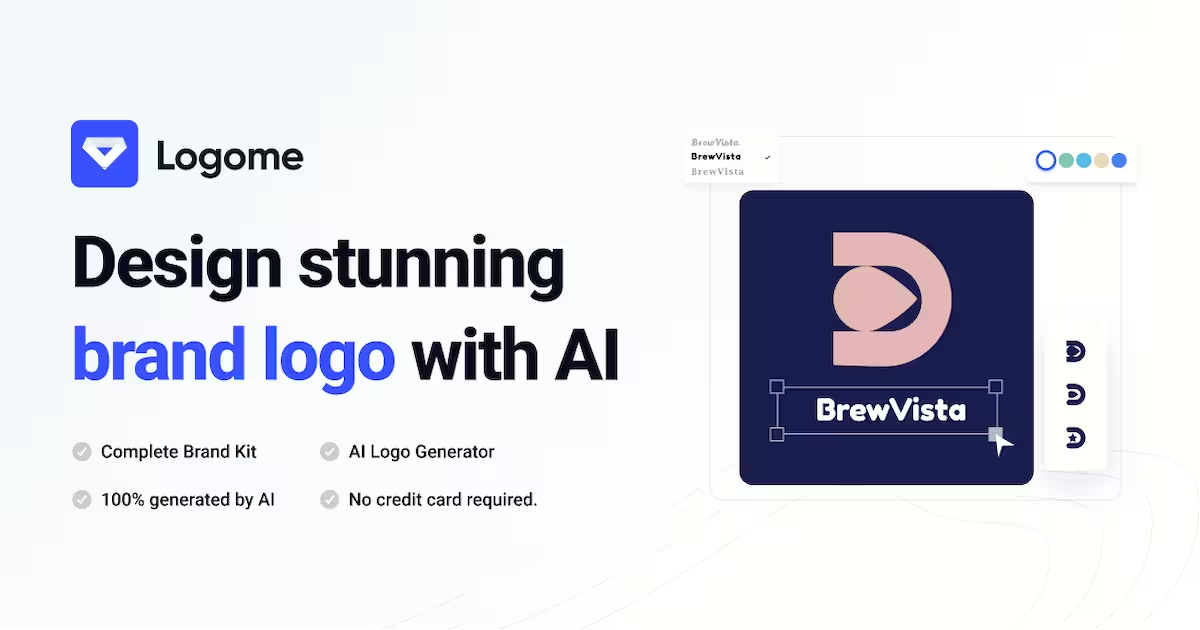
Your product might not be unique, but your brand absolutely can be. Branding is how you stand out, build loyalty, and charge more than your competitors.
Start here:
- Design a logo that’s simple but memorable
You don’t need to overthink it. Tools like Logome can help you create one, or you can hire a freelancer from Fiverr or Upwork. - Choose a color palette and font family
Stick to 2–3 colors and consistent fonts across your website, packaging, and social media. Consistency builds trust. - Craft your brand story
Why does your brand exist? Who are you helping, and how? A strong story builds an emotional connection, and people buy from brands they believe in. - Don’t skip packaging
If you’re selling physical products, packaging matters more than you think. It’s often the first physical interaction a customer has with your brand. Make it count.
Step 4 – How to Set Up an Online Store for White Label Products
You’ve got your product and brand. Now you need a place to sell.
Here’s what to focus on:
- Pick the right platform
Shopify is beginner-friendly and integrates well with Spocket. WooCommerce is great if you want more control and already have a WordPress site. - Use high-quality product photos
If your supplier provides generic images, try to take your own or use lifestyle mockups to make your brand stand out. - Write product descriptions that sell
Don’t just list features. Talk about benefits, solve problems, and answer questions your customer might have. Keep it clear and human. - Set up secure payment options
Enable trusted gateways like PayPal, Stripe, and credit cards. Customers need to feel safe checking out. - Add clear shipping and return policies
Set the right expectations from the start. Transparency builds trust and reduces complaints.
How to Market and Promote White Label Products
Now that your store is live, it’s time to bring in customers. You can have the best product and branding in the world, but if no one sees it, you won’t make a single sale.
This section shows you how to attract the right audience and turn traffic into loyal customers—without wasting money on the wrong tactics.
Social Media Marketing: Start Where Your Audience Spends Time
You don’t need to be everywhere. Start with one or two platforms where your ideal customer already hangs out.
If you’re in beauty or fashion, Instagram and TikTok are perfect. For wellness or home products, Pinterest or Facebook might work better.
Post consistently. Share behind-the-scenes content, customer reviews, product demos, and tips related to your niche. People want to follow brands that feel real and helpful—not just salesy.
Use hashtags to get discovered and engage with followers in the comments. Community builds trust.
Content Marketing: Build Trust Through Value
People don’t just buy products. They buy from brands they trust. Creating helpful content builds that trust over time.
Start a blog on your website. Write guides, how-tos, and product comparisons that answer your audience’s questions. Not only does this help potential customers, but it also boosts your SEO.
You can also repurpose content—turn a blog post into an Instagram carousel or a TikTok video. It saves time and helps your message reach more people.
Email Marketing: Turn Visitors Into Customers (and Repeat Buyers)
Once someone visits your site, don’t let them leave without offering something in return. Add an email signup form with a discount code or free guide related to your niche.
Use email to:
- Welcome new subscribers
- Announce product drops
- Share tips and blog content
- Offer exclusive deals
Email marketing isn’t just about promotions. It’s about building a relationship that makes people want to come back.
Influencer Marketing: Borrow Trust From People Who Already Have It
Influencers don’t have to be celebrities. Micro-influencers (people with 1,000 to 50,000 followers) often have a stronger connection with their audience, and they’re more affordable.
Reach out to influencers in your niche and offer free products or affiliate commissions in exchange for reviews or shoutouts.
Make sure they align with your brand. Their audience should be your audience too.
Paid Advertising: Speed Things Up With Targeted Ads
Organic marketing takes time. If you want faster results, try running ads on Facebook, Instagram, or Google.
Start small. Run ads for a specific product or landing page. Target people by interest, age, or behavior. Test different images and copy to see what works best.
Keep a close eye on your results so you don’t burn through your budget without seeing returns.
How to Provide Great Customer Support for Your White Label Store
Marketing gets you the sale. But customer service is what brings people back.
Great support turns one-time buyers into loyal fans who promote your brand without being asked. It also protects your reputation when things go wrong—and at some point, they will. Tools like reputation monitoring software help you stay on top of customer feedback under your own brand, adding an extra layer of trust and professionalism.
Here’s how to keep your customers happy and build trust from day one.
Respond Fast and Be Human
When a customer reaches out, they don’t want to wait days for an answer. Fast, friendly responses show that you care.
You don’t need a full-time support team to do this well. Just check your messages daily and reply with clear, helpful answers. Use tools like Zendesk or Shopify Inbox to manage conversations efficiently.
And always speak like a human—not a robot. “Hi Sarah, thanks for reaching out!” goes a long way.
Be Clear About Policies
Confusion creates complaints. Make sure your shipping, return, and refund policies are easy to find and even easier to understand.
Don’t overpromise. If your supplier takes 7–10 days to ship, let customers know upfront. Transparency builds trust—even when things aren’t perfect.
Handle Issues Proactively
If something goes wrong, own it. Whether it’s a late shipment or a damaged product, your response matters more than the mistake itself.
Offer quick solutions: refunds, replacements, or store credit. And always follow up to make sure the customer is satisfied.
Happy customers might tell a friend. Unhappy ones will tell everyone.
Ask for Feedback (and Actually Use It)
Don’t wait for negative reviews to find out something’s off. Ask customers how their experience was, and pay attention to patterns.
If multiple people mention slow shipping or confusing product descriptions, take action. Improving small things makes a big difference in customer satisfaction—and your bottom line.
How to Scale a White Label Business and Increase Sales
Once your store is up, and the first sales start rolling in, it’s tempting to take a break. But scaling is where the real growth—and profit—happens.
This stage isn’t just about selling more. It’s about making your business smarter, more efficient, and built for the long run. Here’s how to do it right.
Adding More White Label Products to Your Store
Start by analyzing what’s working. Which products are selling well? Which ones have the best profit margins or lowest return rates?
Add more of what works, but stay within your niche. If you’re selling organic skincare, don’t suddenly launch kitchen gadgets. Expand in a way that makes sense to your audience.
You can also bundle related items to increase average order value. For example, turn a single product into a starter kit or a seasonal collection.
Ask your supplier what other products they offer. Many white label vendors have a wider catalog than what’s listed on the front end.
Expanding Into New Markets and Customer Segments
Once you’ve built momentum locally or in a single country, look at new markets.
If your supplier offers international shipping, you can start targeting customers in other regions. Research which countries have demand for your niche and adjust your marketing to fit.
You can also target new customer segments. Maybe your brand started for college students, but could also appeal to working parents or professionals. Small shifts in your messaging and visuals can unlock entirely new audiences.
Just make sure your customer service and logistics are ready before scaling big.
Using Automation and Analytics to Grow Profitably
Scaling gets messy without systems. The more orders you handle, the harder it becomes to track everything manually.
Use tools like:
- Email automation (Klaviyo, Mailchimp)
- Order fulfillment tracking (Shopify, ShipStation)
- Inventory alerts
- CRM platforms for managing customer data
Analytics are your best friend here. Look at what channels drive the most sales, what products have the highest lifetime value, and where you’re losing customers.
Once you know what’s working—and what isn’t—you can double down on the right strategies.
Final Thoughts: Is White Labeling Worth It in 2025?
If you’ve made it this far, you already know that white labeling isn’t just a shortcut — it’s a strategy.
In 2025, building a white label brand means you can launch fast, keep overhead low, and focus on what really moves the needle: your story, your marketing, and your customer experience.
You don’t need to invent a product. You need to make it yours. That’s where your power is.
Whether you're just starting out or looking to expand your current business, white labeling gives you a clear path to grow without getting stuck in manufacturing and logistics.
Take what you’ve learned here — choose a niche, find a reliable supplier, create a brand you believe in, and start selling. With the right tools, like Shopify for your store and platforms like Spocket for sourcing, you’re not just building a store. You’re building something that can scale.
The best time to start? Right now.




















